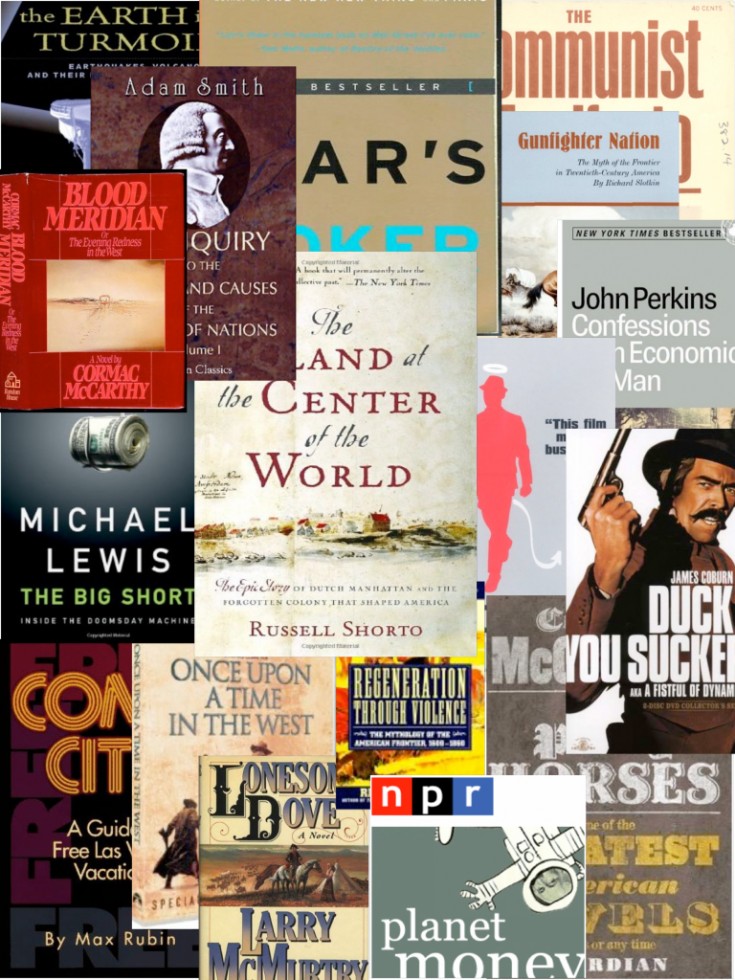One of the observations commonly made about the TEAM’s work is that there are a lot of ideas at play in our plays. A review of Mission Drift in Portugal’s Público called it “an intelligent, urgent, cerebral show”, which suits us just fine! After all, the mission of the company is to ‘dissect and celebrate the experience of living in America today’, and that experience is, as any waking American might tell you, a complex one. The job we are attempting to do is take what can seem like an inchoate mass of theoretical, historical, and editorial ideas, wrap our arms around them, root them in the hearts and pursuits of humans, add a dash or three of pizzazz for the stage and make it a play.
This is a post about the first part of the process (although it continues throughout, to be sure). For any TEAM project, once we have selected the larger intellectual/experiential sphere in which we’ll be partying for the next 1-3 years of development (i.e., “What’s the deal with American-style capitalism?”), we put ourselves through a kind of immersion therapy in and around that subject. So for Mission Drift we essentially had two arenas ripe for research: Economics and Westerns. We read classic texts of economic theories, we organized lectures on the finer points of the mortgage-backed securities crisis, watched documentaries about corporate influence and malfeasance, and listened to hundreds of hours of economics podcasts. And on the other hand we watched westerns! And read them. And read books about them. And histories of The West. And theories about the mythological underpinnings inherent in stories of “The West”. And so on. The shared bibliography of influences for Mission Drift contains dozens and dozens of essays, articles, books, and movies consumed by one, some, or all of us.
I know the classic axiom of writing is “write what you know”. And I get that I think. But for me half the fun of writing new theatre in this way is to tackle something truly huge and perhaps unknowable, learn as much as I can along the way, and then wrestle with what we find.
How much of what we read, watch, or otherwise absorb winds up in our play? Hmm, hard to say. The slightly cheeky answer is all of it, right? It’s all in there somewhere, in the bones of the people directing, designing, and performing. Can I point to the lines that were inspired by Cormac McCarthy or Adam Smith? Surprisingly sometimes yes, for instance the moment where Catalina renames Joris “The Wealth of Nations” is probably in some distant way related to Adam Smith, but a lot of times it’s just about giving us the confidence to weave a tighter dramatic fabric, and when we come across a tear know that there’s a lot more material around to look to.
And here’s a collage of a small number of titles from that bibliography that took an embarrassingly long time to photoshop together.
bh
